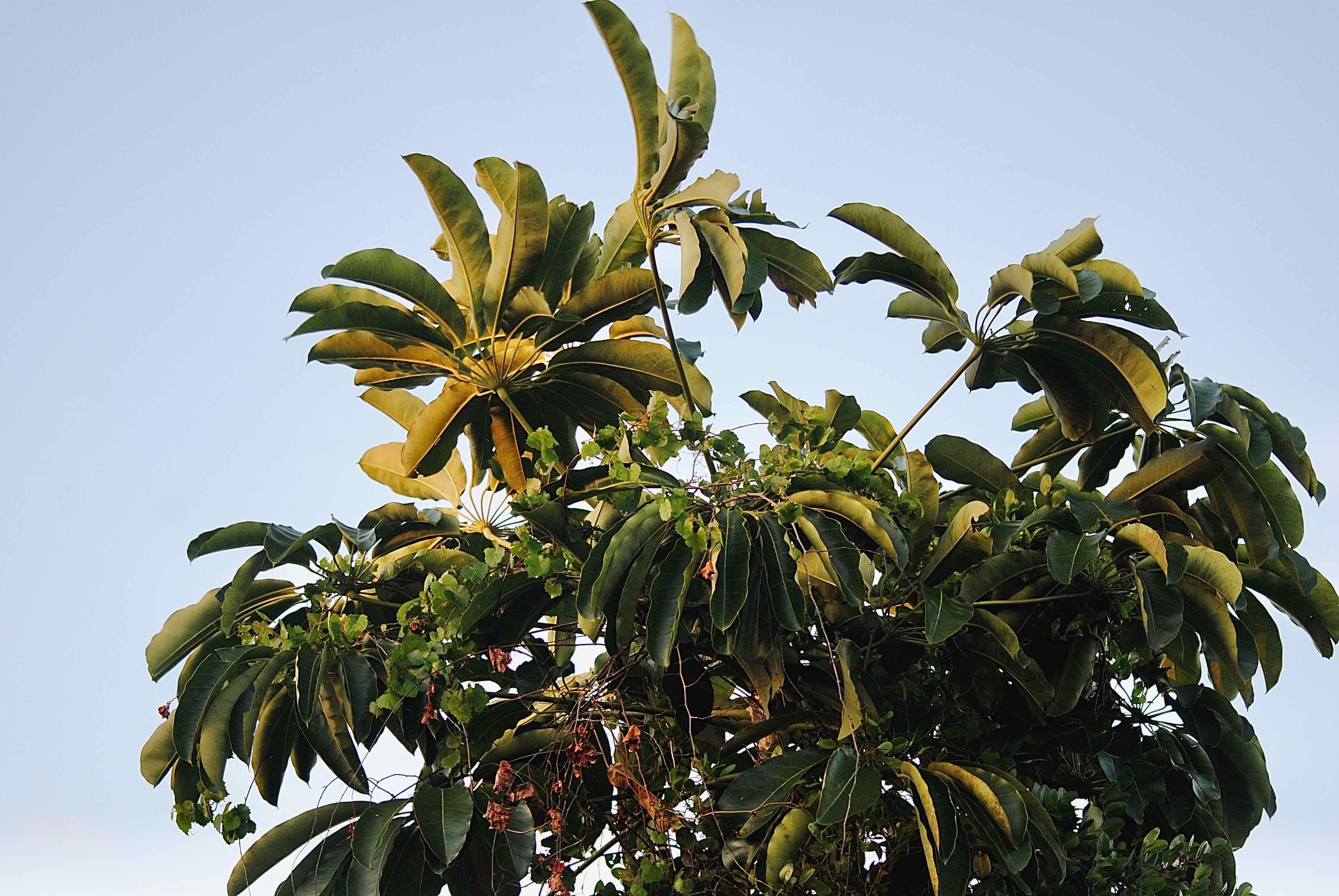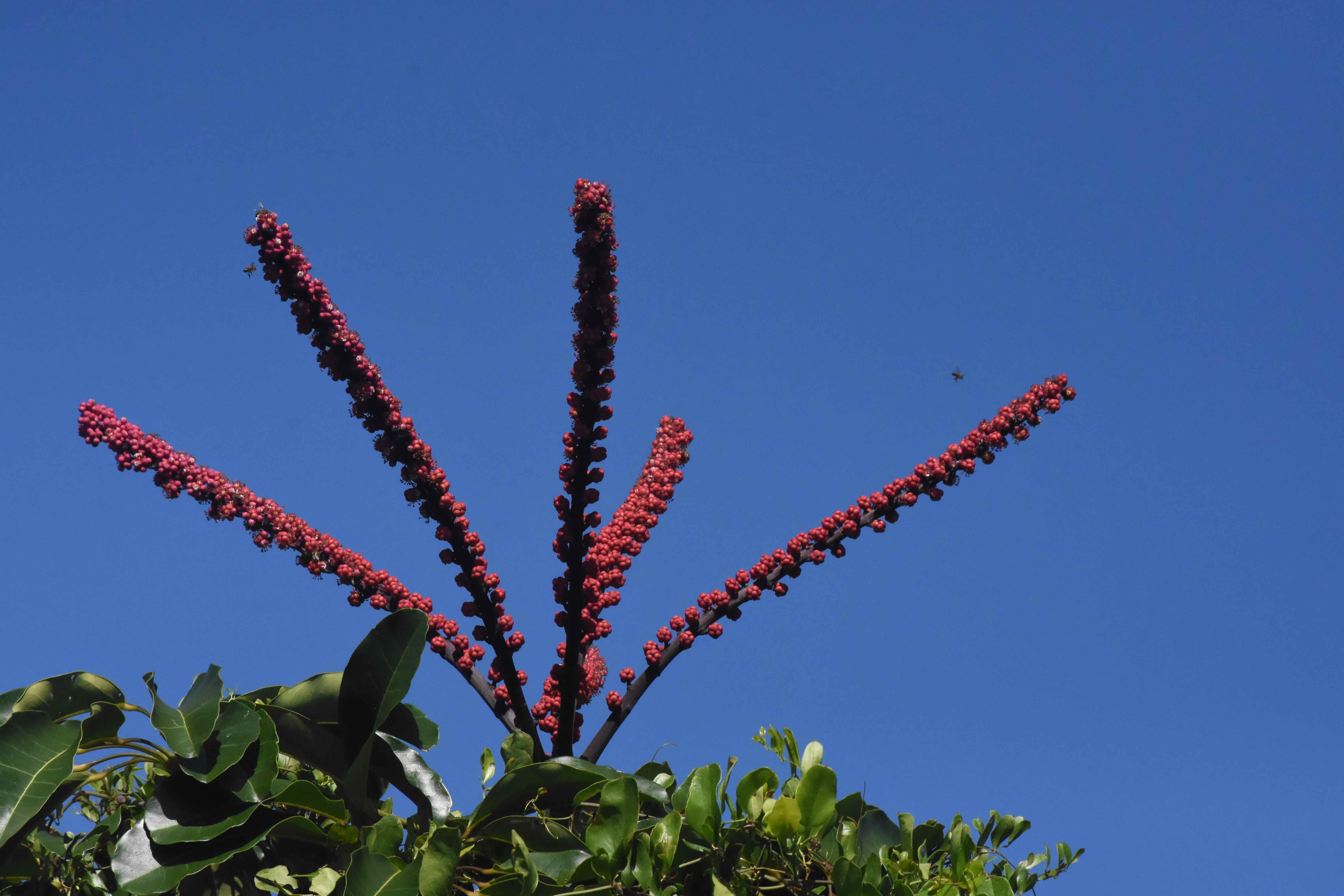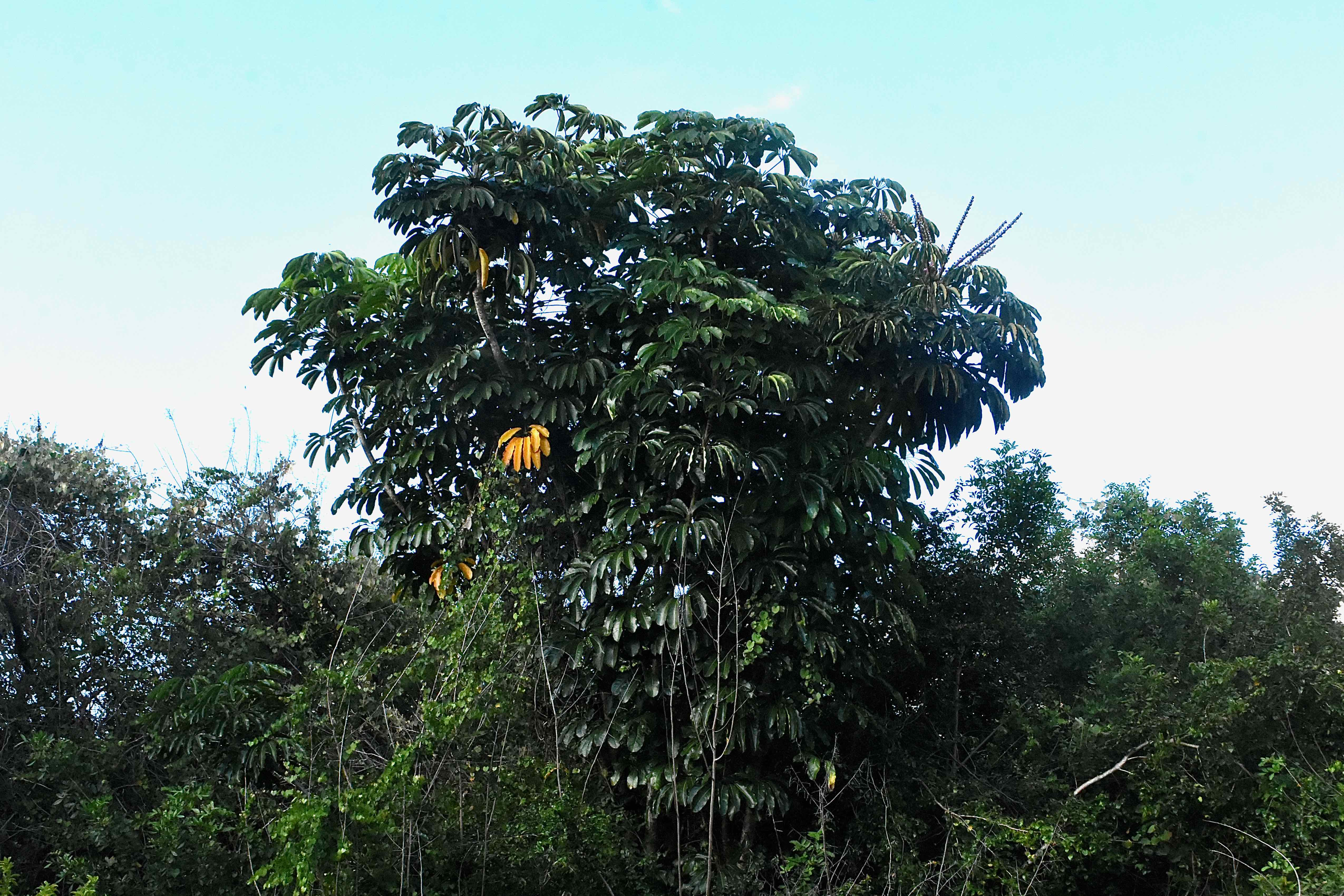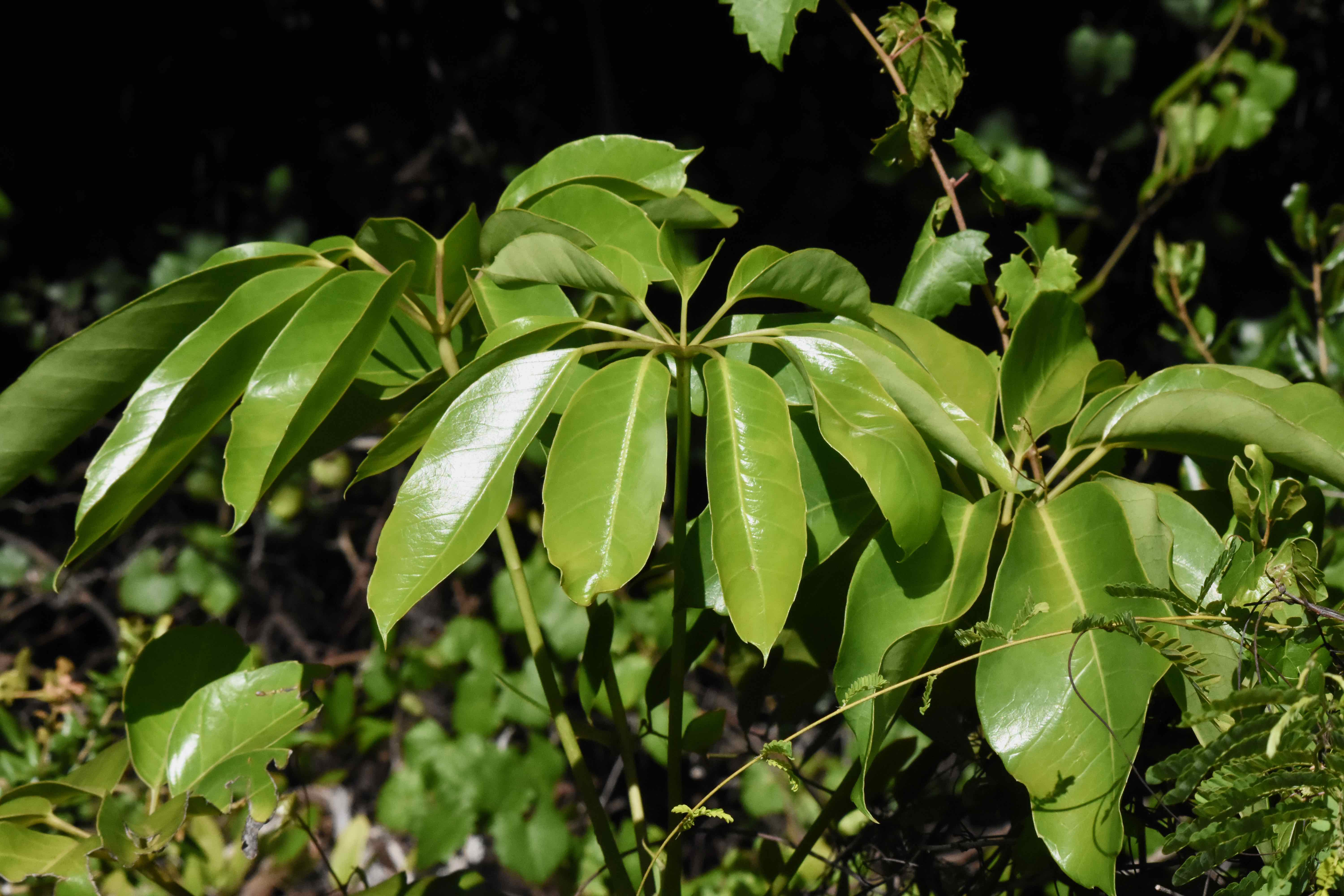
Schefllera, photographed at Blazing Star Nature Preserve, Boca Raton, Palm Beach County, in April 2014.
Schefflera actinophylla is a tree of many common names: umbrella tree and octopus tree are two of the more physically descriptive. Schefflera also works, although not nearly as telling as the other two.
Call it what you like — we’ll use schefflera — it’s commonly seen in the yards of South Florida homes as a specimen tree, as a windbreak or as a screen. It’s even used as a container plant.
Unfortunately, it’s also a common site in South Florida’s parks and preserves. According to one report done in the late 1990s, schefflera had invaded 44 percent of the region’s preserves. The organization formerly known as the Florida Exotic Pest Plant Council lists it as a Category 1 invasive, meaning it’s widespread and damaging ecosystems.
Whether it’s still as pervasive in the wild as it was decades ago is unknown, at least to us, but we’ve seen too many preserves where it has a heavy footprint.
It’s found as far north as Brevard County along the Atlantic and Pinellas along the Gulf. It’s found in every South Florida county sans Broward. It’s also absent from mainland Monroe.
Schefflera is a native of Queensland, Australia, and New Guinea. It was introduced to Florida in 1927 as a landscaping plant. By the late 1970s, it was reported to have naturalized in the wilds of the state. The Florida Exotic Pest Plant Council declared it an invasive in 1996.
Schefflera is a major invasive pest in Hawaii and parts of the Pacific where it’s been introduced. Even in its native Queensland, schefflera can be a pest when it grows outside of its native range.
The two other common names we mentioned perfectly describe Schefflera’s most recognizable features. Its compound leaves look like umbrellas, its tenacle-like flower spikes bring to mind octopuses (or octopodes if you prefer, but not octopi, according to the dictionary). In fact the entire tree resembles a giant umbrella.
Schefflera can have a single trunk or multiple trunks. It’s a rapid grower, capable of hitting 40 feet tall in South Florida, 50 feet in its native range. The crown on a mature tree can be 25 feet wide.
The leaves are arranged alternately along the branches, compound, with five to 18 leaflets each. Individual leaflets are dark, glossy green above, pale green below, the edges “entire,” meaning no serrations or lobes. A single leaf can be three feet long.
The flowers are deep red, about an inch across and arranged along tentacle-like stalks as long as 35 inches. Schefflera typically blooms spring into summer, but the timing can be variable even to the point of blooming twice within the same year. The fruit, when ripe, is a berry that’s about a half-inch in diameter and deep red to purple. Birds love them and are the major way their seeds spread.
Schefflera can thrive in a variety of habitats, dry or wet, sunny or shaded. It can quickly take over a new clearing in a hammock or a scrub, crowding out native plant species.
It is both drought and cold tolerant to a degree, able to survive brief temperature dips as low as 22 F. However, Schefflera does have a couple of limitations: Shaded plants don’t do quite as well as those growing in full sun, and don’t tend to produce seeds. Schefflera also needs to be 10 to 15 years old before its mature enough to produce seeds.
One oddity: schefflera can grow as an epiphyte similar to a strangler fig if the seed lands in the boot of a cabbage palm or the bark of a laurel oak.
One good piece of news: if you like the looks of schefflera, you might want to consider its cousin, dwarf schefflera, S arboricola, as a container plant. It has naturalized in South Florida, but at least as of this writing, it isn’t considered invasive. On the whole, however, we tend to recommend natives over exotics in the landscape.
A quick taxonomic note: The authoritative Atlas of Florida Plants and a few other sources place schefflera in the genus, Heptapleurum. The Integrated Taxonomic Information System, our arbitor of such things, keeps it within the genus Schefflera, at this point. Some have placed it in the genus Brassaia, but the ITIS does not accept it.
Other common names for schefflera include the aforementioned octopus tree and umbrella tree, Australian umbrella tree, Queensland umbrella tree, ivy palm and starleaf. It is a member of Araliaceae, the ginseng family.



